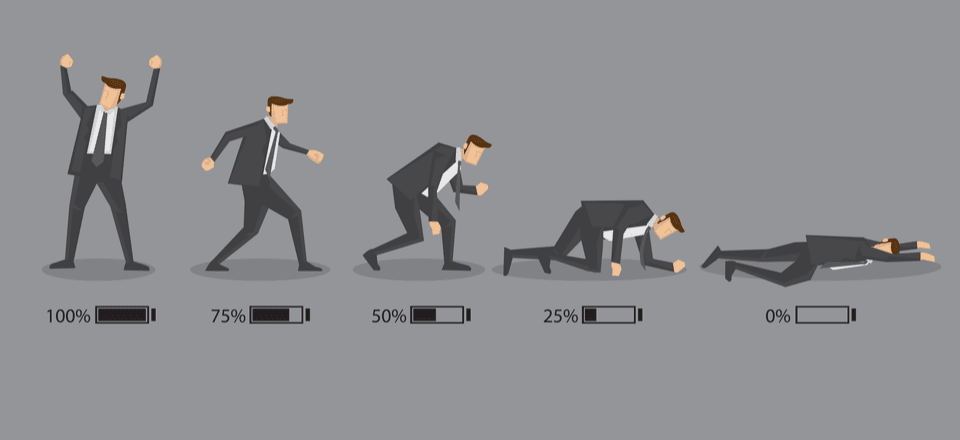
It is easy to wonder if you are doing the right poses when you start yoga. Doing yoga incorrectly can lead to you feeling uncomfortable and discouraged. Instead of obsessing about how your postures look, you should focus on developing a strong relationship between your body and your mind. These tips can help you get the best poses possible and avoid discomfort during your practice.
To maximize the benefits of your yoga class, arrive early. It can cause anxiety to rush into a class. Many new students admit feeling anxious before their first class. Running late can increase your anxiety and discomfort. It's important to arrive before the deadline. This will allow you time to settle in and use the toilet, as well as to adapt to the environment. If you're unsure of how long it will take, ask a teacher.

Preparation for your first class of yoga. To ensure a spot in the class, it is important to arrive on time. Also, familiarize yourself to beginner-friendly poses. Avoid eating large meals prior to class. This will make the stomach uncomfortable from the constant movement. Also, avoid eating large meals prior to class. Moving around too much can cause discomfort. Consult a doctor if you are concerned about stomach discomfort.
Respect your teacher. Yoga instructors can help correct you in your poses. While hands-on instruction is very helpful, you should keep in mind that it's a personal practice, and every student's goals and abilities will vary. A good way to handle this is to remember to have fun and laugh whenever you fall out of poses or get stuck in difficult poses. Similarly, don't feel bad when a yoga teacher makes corrections to your posture. It's part the process and it should be enjoyed.
Yoga classes can be intimidating to beginners. Before you go to a class, learn the names of common poses. Do not practice them until your know the name for each pose. Instead, look at the pictures and learn the names. Once you have an idea of the hardest ones, you can then choose which ones to do. Once you have found your yoga sweet spot you can move on.

It is important to recognize that yoga can be hard for beginners. Don't expect to master it right away. It may take time if you are new to yoga. It is important to remember that you are learning new skills, so be patient. Once you do that, it will be easier to concentrate on the task at hand. Yoga instructors can help you learn the skills required to run a successful yoga practice.
FAQ
Which workout is the most effective for men
The answer will depend on what you are searching for. Cardio workouts can help you lose weight faster than strength training.
If you want to just build muscle mass, strength training is better as it increases lean body weight.
Both types of exercise are proven to be beneficial if you're looking to improve your overall health.
I recommend HIIT (or sprint interval training) if you want to be fit quickly. This type training will help you quickly lose fat by increasing your metabolism. It can also increase your endurance, so that you can train even when fatigued.
What is the Best Workout for Men Over 40 Years?
The best exercise for older men is one that gives them more energy, and increases their stamina.
It is important for you to know that over 40s experience a reduction in testosterone which can lead to lower sex drive.
This doesn't mean that you shouldn't still engage in physical activity. There are many studies that show regular aerobic exercise can raise testosterone in some men.
Aerobics can be a good way to improve your sexual performance.
How does weightlifting help you lose fat more quickly?
You can lose more fat by weight lifting, but only when you do it in conjunction with cardio.
To maximize the benefits of weightlifting, you need to perform it after cardio workouts.
Weightlifting, when done properly, increases your heart rate.
However, if you don't combine it with cardio you won't see any significant changes to your body composition.
Is cardio exercise good for your health or bad?
Cardiovascular exercise offers many benefits. It improves blood flow, strengthens your heart muscle and increases stamina.
Cardiovascular exercise includes running, biking, hiking, swimming, tennis, basketball, soccer, volleyball, football, etc.
Cardio exercises should be avoided at high intensity levels. This could result in injury.
If you feel fine, only do the cardiovascular exercise.
It is important not to push yourself beyond your limits. This could lead to injury.
Warm up is the best way to start cardiovascular exercise. Then, gradually build up to higher intensity levels.
Be aware of your body and listen to it. If you feel pain while performing cardiovascular exercise, it is important to stop immediately.
It is also advisable to rest after a cardiovascular workout. This allows your muscles time to recover.
Cardiovascular exercise can help you lose weight.
It is the most effective way to burn calories and reduce belly fat.
How many calories do I need to eat each day?
It varies from one person to another. On average, you need 2000 to 2500 calories per days. The factors that determine how many calories are needed for you include your gender, age, height, activity level, lifestyle, and gender.
Is there any benefit to doing yoga?
Yoga has been around since ancient times, and it has recently gained popularity. Yoga is very popular with celebrities as well as ordinary people who wish to be fit and healthy.
Yoga is great for strengthening and stretching your muscles. Yoga is also great for calmening your mind and relaxing.
Yoga is different from other types of exercise in that it focuses on breathing techniques.
Practice a variety of poses to increase your flexibility and balance.
What Is The Best Way To Lose Weight?
It's not easy to lose weight. Many people give in to temptation because they don't know how to proceed.
To lose that extra weight, however, there are simple steps you could take.
First, make sure you eat less calories than you burn. If you eat more calories that you burn, you'll gain weight.
The second is to get regular exercise in order burn those calories. You have the option of doing jogging or walking or cycling, as well as dancing.
Third, stop smoking cigarettes or drinking alcohol. These habits can cause you to consume more calories that you would otherwise.
Fourth, you should cut back on junk food. You can replace these unhealthy foods with healthier choices like fruits, vegetables, lean proteins, whole grains and nuts, seeds and beans, as well as other healthy options such a legume, fruit, vegetable, legumes, whole grain, nuts, seeds, and beans.
Fifth, it is important to make lifestyle changes and develop new habits. You might need to get up earlier every morning to do some exercise before going to work.
Sixth, discipline and following a diet plan are essential.
For those extra calories, you could join a class or go to a gym.
You will quickly notice the difference by following these simple tips.
Statistics
- Cardmembers earn 5% Back at Amazon.com with a Prime Credit Card. (amazon.com)
- The PRS enabled risk stratification for overall prostate cancer and lethal disease with a four-fold difference between men in the highest and lowest quartiles (HR, 4.32; 95% confidence interval [CI], 3.16-5.89). (pubmed.ncbi.nlm.nih.gov)
- By John Thompson Take a whopping 38% off a set of PowerBlock Pros. (menshealth.com)
- According to the American Heart Association, blood pressure should be checked at least once every two years, beginning at age 20. (my.clevelandclinic.org)
- Candidates and applicants must pass all four tests at 70% (minimum level) to graduate from Basic Deputy U.S. Marshal (BDUSM) Training. (usmarshals.gov)
External Links
How To
How do I lose weight while working out?
Exercise burns calories by increasing metabolism and oxygen consumption.
Moderate intensity exercise is a safe way to lose weight.
These are some tips to help you lose fat while working out:
-
Cardio exercises like walking, running (or jogging), swimming, cycling, running, and/or elliptical training are all good options.
-
For 30 minutes, do it three times a week.
-
Strength training is a great way to lose weight.
-
Avoid intense workouts. You can build muscle without breaking down muscle tissue.
-
Drink plenty of water during exercise. Water helps flush out toxins and keep your body properly hydrated.
-
After working out, drink low-fat protein shakes. Protein shakes repair muscles and increase energy.
-
You can eat smaller meals throughout the day so that you don't feel hungry in between meals.
-
Don't skip breakfast! Skipping breakfast can make you tired and sluggish.
-
Mental health is important. Stressful situations can slow down metabolism.
-
Keep a positive attitude. Studies have shown that people who are convinced they are overweight gain more weight than those who feel they look attractive.
-
Get enough sleep. It is harder to lose fat if you don't get enough sleep.
-
Active living is key. Keep moving every hour.
-
Maintain a healthy diet. Eat right to feel satisfied and full for longer.
-
Relaxation is possible by finding ways to relax. A tense mind doesn't allow your body to release stress hormones that break down muscle tissue.
A balanced diet includes all essential nutrients needed for growth and development.
Consider eating six small meals daily instead of three big ones. This gives your body the time it needs to process what you've eat.
Calcium is required to support strong bones. Calcium can be found in dairy products such as yogurt, fortified soybean beverages, orange juice, cereals, bread, and cereals.
Calcium is found in leafy vegetables, beans and tofu, as well nuts, seeds and cheese.
Vitamin D is necessary for the body to absorb calcium. Vitamin D is found in certain fortified foods, such as egg yolk and fatty fish.
Vitamin E is crucial for skin health. It can be found as a vegetable oil, wheat germ, peanuts or almonds.
Zinc is essential for healthy immunity and wound healing. Zinc can also be found in legumes, oysters, meats and whole grains.
Zinc deficiency may cause fatigue, loss appetite, depression, and impaired immunity.
Eating too much sugar causes insulin resistance, which increases blood glucose levels. Insulin resistance leads to weight gain.
High levels of free radicals can lead to insulin resistance. Free radicals refer to molecules that contain unpaired electrons. They can damage cell membranes and other body parts.
Free radicals come mainly from food additives, pesticides, herbicides, preservatives, smoking, air pollution, radiation, chemicals in cosmetics, lotions, and household cleaning supplies.
Free radicals can lead to cancer and heart disease, diabetes mellitus, arthritis, asthma, and premature aging.
The best way to avoid free radicals is to eat a balanced diet high in antioxidants. Antioxidants protect against oxidative damage.
Vitamin C (found on citrus fruits), Beta carotene, found in carrots and sweet potatoes, spinach and broccoli, cantaloupe (found in tomatoes, mangoes and peppers), and Vitamin E (found nuts, olive oil and avocados).
Additional antioxidant nutrients include selenium and copper, manganese and zinc.
Selenium helps protect cells from oxidative damage caused by free radicals. Selenium is also found in Brazil nuts.
Copper protects the eyes, brain, lungs, liver, and red blood cells. Copper is found in shellfish, poultry, meat, and organ meats.
Manganese is essential for bone structure. Manganese can also be found in oatmeal, brown rice, spinach and bananas.
Zinc helps with normal growth, reproduction, as well as wound healing. Zn is present in lean cuts of meat and white fish, as well as eggs.